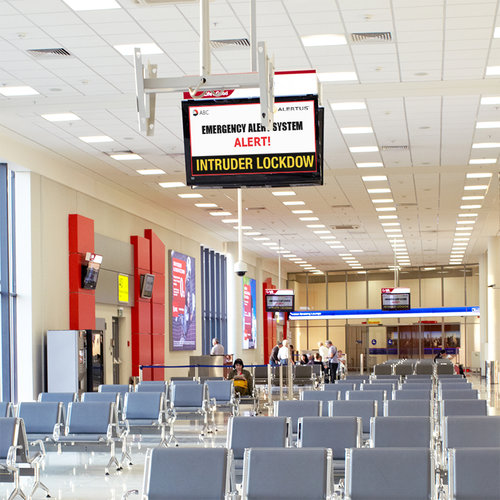Mass Notification Plays a Critical Role within the Transportation Industry
Kara Stamets, Sr. Content Marketing Specialist, Alertus Technologies
Emergencies within the transportation industry can cause ripple effects that hugely impact the economy, business operations, and people's daily lives. Major technological disruptions like the global CrowdStrike outage, natural disasters such as Hurricane Beryl, and significant maritime tragedies including the cargo ship Dali crash in Baltimore underscore the importance of providing fast emergency updates and announcements to help mitigate harm. This blog will highlight the critical role mass notification systems (MNS) can play in notifying everyone of hazards and major disruptions in transportation.
With an MNS, Transportation operations can:
Distribute Instant Notifications
An MNS is essential in the transportation industry to communicate with the community, ensure safety, and protect assets. Leadership can distribute preset alerts instantly over multiple communication channels like PA systems, SMS/mobile app notifications, digital signage, social media, and email to reach intended audiences, who may be passing through travel hubs like airports or train stations.
Satisfy Safety Regulations
An MNS supports the Federal Aviation Administration (FAA) and Department of Transportation (DOT) regulations and guidelines for effective communication during emergencies. Airports are generally required to have PA systems, alert systems, and emergency operations centers, while DOT handles railroads, highways, and maritime operations that require communication systems to provide rapid information to the public and coordinate importation instructions to different agencies and organizations.
The FAA Emergency Notification System (ENS) uses the AtHoc Network Communications Suite to alert FAA employees and contractors, which can be integrated with the Alertus Solution.
Enhance Two-way Communication
Two-way communication between dispatchers, drivers, passengers, and first responders allows for rapid coordination and situational awareness in an emergency. To enhance communication over two-way radios commonly used by security personnel in airports and transportation hubs, an Alertus integration uses Text-to-Speech technology to provide clear, spoken voice alerts and supports playback of alert tones to capture the recipient’s attention. This integration streamlines communication and leverages existing assets.
Mobile Apps also provide effective two-way communication; the Alertus Recipient App allows end users to receive push notifications and send geo-tagged incident reports to emergency personnel.
Provide Wide-area Alerting
Giant voice systems are critical to alert those outdoors of severe weather, security threats, and other hazards. In train stations, PA systems provide wide-area coverage across platforms, while High Power Speaker Arrays (HPSA) provide far-reaching clear voice notifications in large areas like airports and maritime ports.
An MNS is necessary for operational efficiency and passenger confidence in the transportation industry. It is crucial for organizations in this sector to continually review and update their emergency notification strategies in order to communicate effectively with the public and adhere to safety standards.
More Resources
Alertus Transportation Solutions
A high volume of travelers and visitors pass through transportation hubs daily. With the Alertus System, facilities can now reliably and consistently reach large populations across an expansive footprint.
Video Case Study: Wilkes Barre Airport
Carl Beardsley, Executive Director of the Wilkes-Barre Scranton International Airport, talks about Alertus solutions and the difference they make in the airport's emergency preparedness plans.
On-Demand Webinar: Expand Your Reach with Alertus Outdoor Notification
In this on-demand webinar, John Dorney, National Sales Director, High Power Audio, discusses the Alertus High Power Speaker Array. He provides an overview of the solutions with a particular focus on the Mobile High Power Speaker Array, MHPSA.



